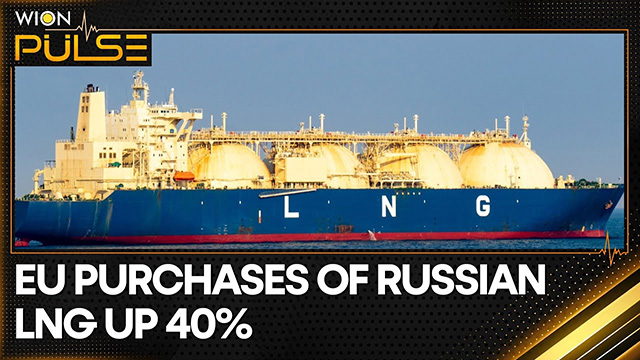
Europe's monthly imports of Russian liquefied natural gas — the supercooled version of natural gas that can be transported on ships — have been holding relatively steady, in the 850,000 to 1.6 million metric ton range, Bloomberg records.
This continued import of Russian fuel shows the complications of cutting off Russian gas completely in the global energy market.
To be sure, Russia's share in Europe's natural-gas imports has dropped dramatically since the Ukraine war started.
Before Europe imported over 40% of its natural gas from Russia — its single largest supplier and a major energy producer — mainly via pipelines.
By the end of last year, Europe still imported about 15% of its total gas supply from Russia, with about 9% coming from pipelines and 6% as LNG. This is down from 43% and 4% from pipelines and LNG, respectively, in the first quarter of 2021.
"This means that the handful of member states that have not been able to or have not chosen to reduce their dependency remain highly vulnerable to Russia's weaponization of energy imports," Brookings analysts wrote in a June report.
Europe's continued imports of Russian gas are in part due to shifting demands for the fuel that has driven a lot of exports from the US — the world's top LNG exporter last year — to other locations this year.
The US supplied more natural gas to Europe than Russia did for the first time ever in June 2022, but the gap between the two countries' LNG shipments has narrowed.
In July, the difference between the amount of LNG the US and Russia shipped to Europe contracted to its lowest since late 2021, according to a Bloomberg analysis of preliminary ship-tracking data.
At the end of July, Europe imported 1.5 million metric tons of LNG from the US, just slightly more than the 1.3 million tons the region imported from Russia.
The gap between Europe's imports has been narrowing this year. At the end of January, Europe imported 5.2 million tons of LNG from the US and just 1.5 million tons from Russia.
This is mostly due to US LNG shippers sending their goods to where the money is: Asia, where prices have been trading at a premium to Europe due to a summer heatwave.
Spot LNG cargoes for delivery to North Asia were priced around $12 per million British thermal units, or mmBtu, in the week to July 26, according to Reuters in a report. This was about 17% higher than the $10.30 mmBtu for delivery to Europe on July 26.
read more in our Telegram-channel https://t.me/The_International_Affairs

 10:35 04.08.2024 •
10:35 04.08.2024 •






















